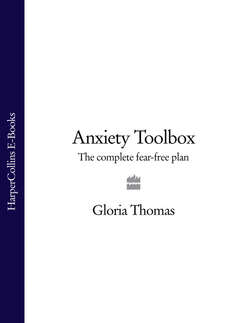Читать книгу Anxiety Toolbox: The Complete Fear-Free Plan - Gloria Thomas - Страница 59
Information That Has Emotional Impact
ОглавлениеInformation that comes through the thalamus can take two pathways to achieve an emotional response. One pathway leads to the neo cortex, the conscious, thinking part of the mind; the part that explains in detail what is happening – for example, this person is talking to me about a controversial topic. It searches through the stored knowledge for such a thing happening in the past. Stored memories can either come from the hippocampus, which searches through long-term memory banks to make sense of a situation, or the amygdala, which holds emotional information and memories. There is a ‘dialogue’ about the information and if the brain perceives that a situation calls for an emotional reaction, the amygdale quickly and automatically signals what it perceives to be the appropriate emotional response. In this instance, if you were to have an emotional tie with the topic being discussed then you may react, for example, with apprehension or anger.
However, there is a second route to the amygdala, a much quicker one that can be more useful in times of crisis. With this pathway, the information comes straight from the thalamus to the frontal cortex and amygdala and tells you that you should ACT NOW THINK LATER. This clearly makes greater sense as a survival mechanism, as we don’t often have time to have a dialogue with ourselves when confronted with a very real threat, such as an oncoming bus.
The amygdala is the emotional regulator – it decides how much emotional impact each thought carries. Whilst this is excellent in a situation that calls for an instant response, i.e. removal of oneself from path of oncoming bus, there are times when the amygdala can produce completely unnecessary responses that trigger ongoing anxiety. This process, referred to as ‘kindling’, occurs when repeated stimulus encourage the neurons in the brain to fire excessively, even when the stimulus is not potentially dangerous (see Sensitization, page 61). This response can cause havoc, as stress hormones are constantly pumped into the body, affecting all its major systems – the cardiovascular system, the endocrine system and the elimination system.
We can see that some people are naturally more reactionary and will quickly respond to an experience with fear and anxiety, while others are able to think a little before responding. However, the point is that we can make choices and as long as the perceived threat is less frightening than imagined then, through the use of language and other strategies, you can change your attitude or perception to dissipate a situation. In contrast, if you continue to repeat the response of reacting with fear when it isn’t warranted, the result can often be a more permanent state of arousal and higher levels of anxiety.
